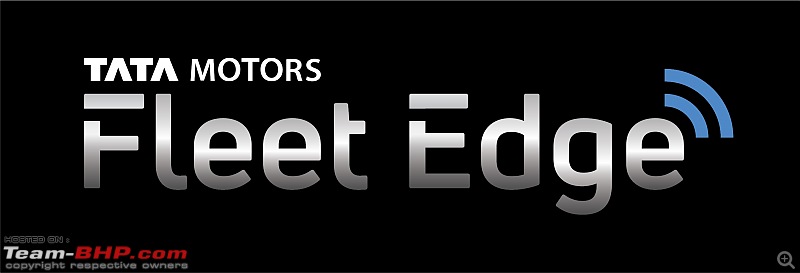| re: Tata launches Fleet Edge digital fleet management platform for trucks & buses
Adding more information on the AIS 140 compliance, which this platform intends to leverage.
To comply with the AIS 140 guidelines every commercial vehicle (with yellow number plate) will need to have a real-time Navic/GPS tracking system with emergency request buttons (panic/SOS buzzer).
This mandate is in line with the notification from Ministry of Road Transport and Highways (MORTH) dated 28th November 2016.
AIS 140 certified tracking devices
For a device to be AIS 140 certified, it should meet the following specifications:
1. The tracking device to be capable of obtaining real-time location information using Global Navigation Satellite System (GNSS); must include support for GAGAN, Indian satellite-based augmentation system.
2. GPS device to support 4 digital, 2 analogue and 1 serial communication (RS232) for interfacing external systems or peripherals (e.g. an emergency/panic button – SOS buzzer).
3. The device to have an internal battery that supports a minimum of 4 hours’ backup (considering location update frequency at 60 seconds).
4. A device has to have the capability to transmit data to a minimum of 2 different IP addresses; one set of data (PVT data) to the first IP address for regulatory purpose and the second IP address exclusively for emergency request system.
5. It should be able to transmit position, velocity and time (PVT) data to back-end control Room (State Road Transport Undertakings’ servers) using GSM/GPRS network.
6. Device to transmit emergency events to second IP address reserved for emergency response system. Once pressed, emergency/panic button should initiate an alarm to the configured IP address(s) as per standard.
7. Data transmission frequency from device to be customized, a minimum of five seconds to a maximum of 10 minutes (while in power saver/sleep mode).
8. Device to operate with an embedded SIM (e-SIM). i.e. embedded in GPS tracking device module.
9. The device GPRS module should have a multi-slot GPRS with in-built quad-band GPRS module with a lifespan of at least 10 years and more than 1 million read/write cycles.
10. A GPS device to have an internal antenna; although not mandatory in the case of integrated systems with vehicle/aftermarket OEM approved kits, and if fitment location prevents the internal antenna from functioning.
11. Device to support ‘Over The Air’ (OTA) firmware and configuration updates.
12. The device needs to be dust, temperature, vibration, water-splash resistant preferably IP65 rated or better and tamper-proof.
13. In case there is no reception (GSM and GPRS), alerts are to be stored in the device and as soon as the network becomes available the device will need to be able to send the information on high priority to the configured addresses.
14. Device to support A-GPS (Assisted GPS) and should have a unique IMEI number.
15. It needs to have three-axis accelerometer and three-axis gyroscope for getting the alerts on harsh braking, harsh acceleration, and rash driving.
16. The device must be developed to operate between 8VDC and 32VDC using vehicle battery input voltage range 12/24 volts.
These are the major requirements in addition to physical tests conducted by ARAI to make sure devices conform to the standards. | 

 (7)
Thanks
(7)
Thanks
 (5)
Thanks
(5)
Thanks




